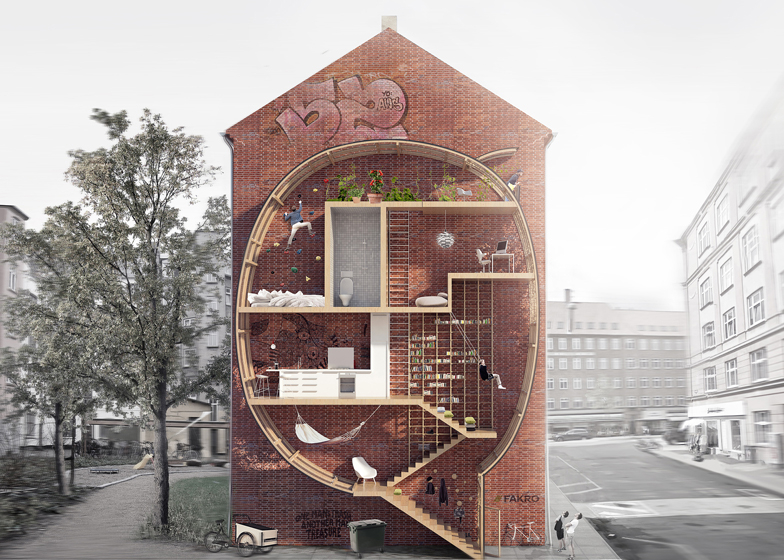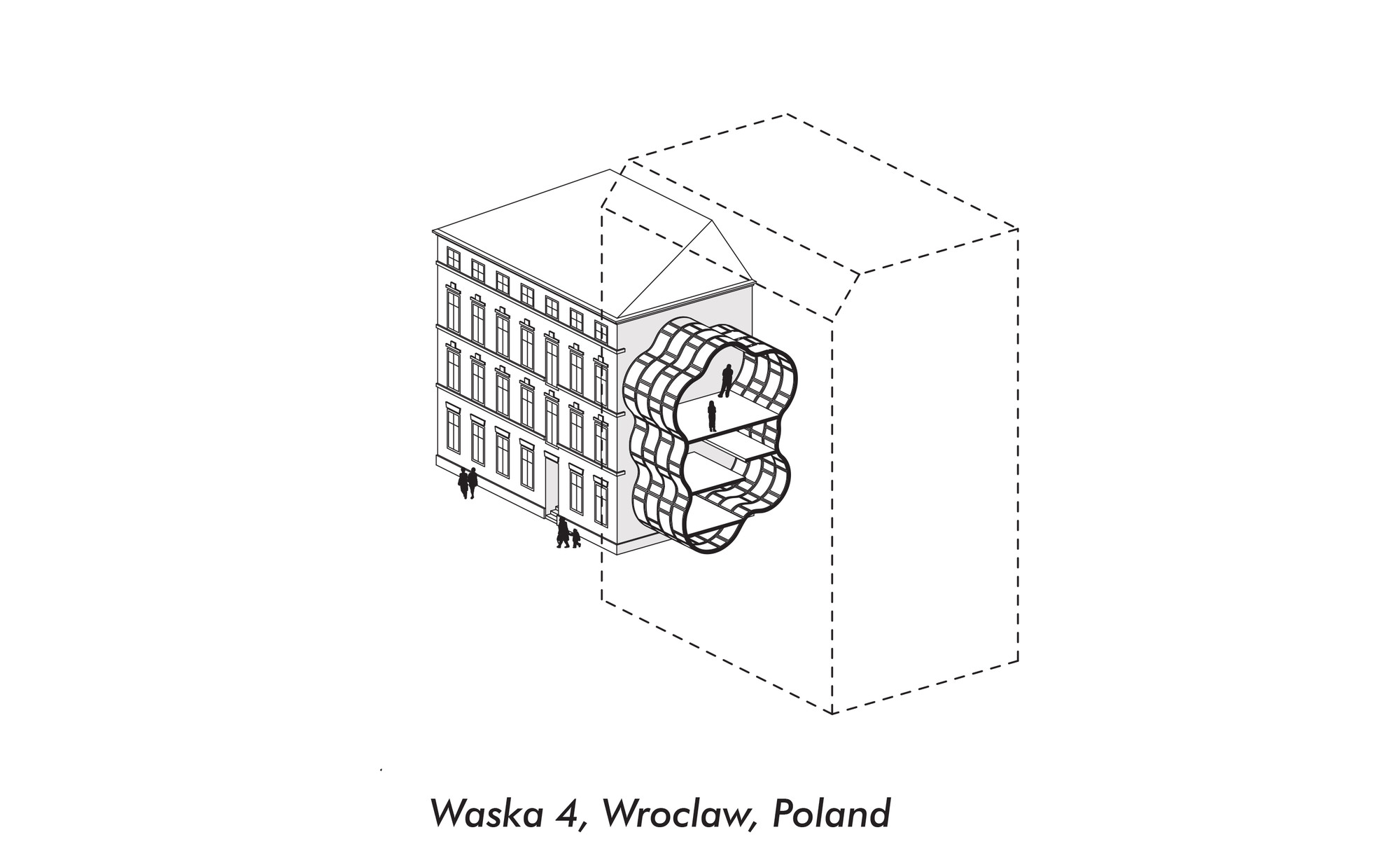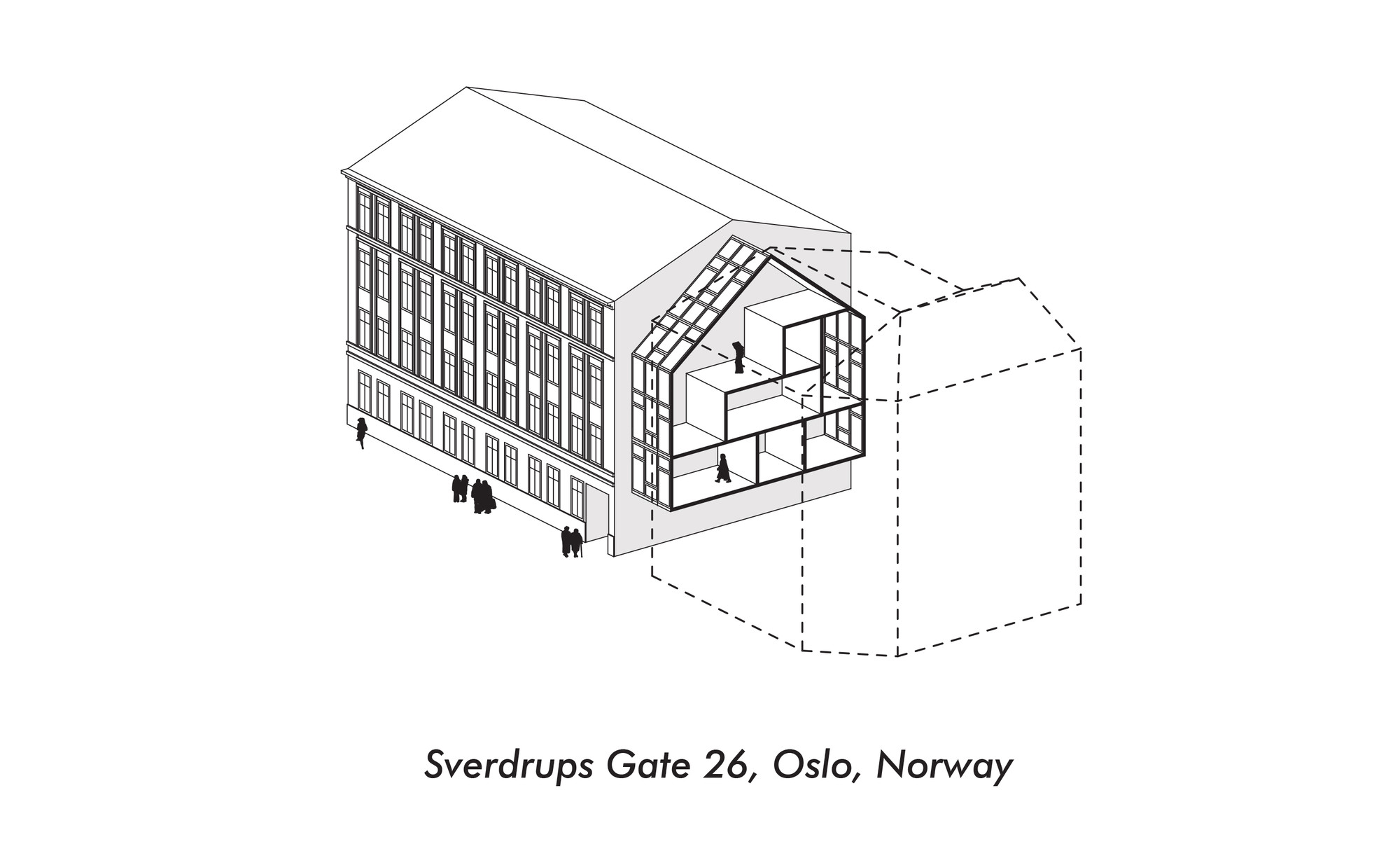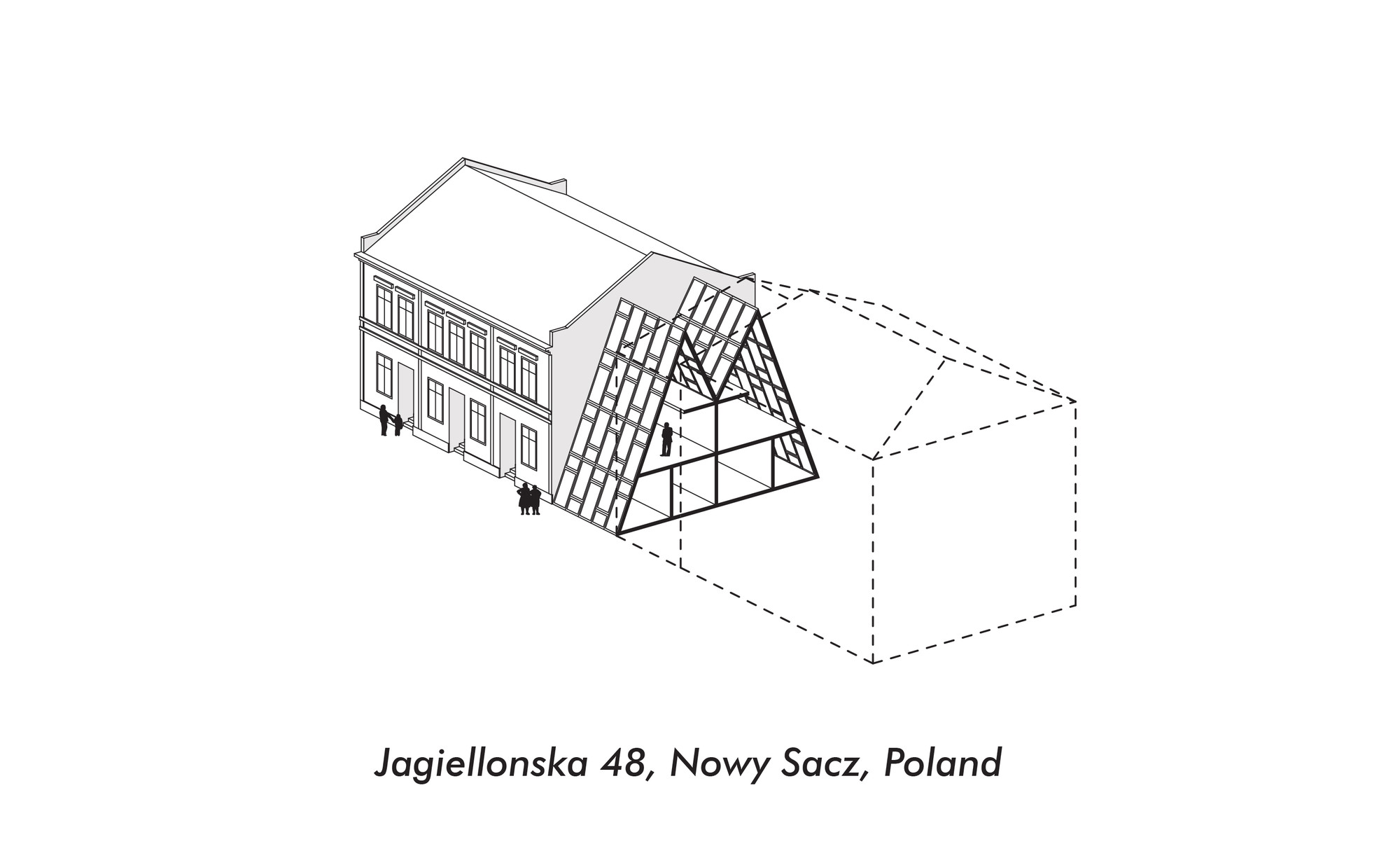Narrow Apartment Buildings Fill Gaps

Could the narrow slices of space between urban buildings be utilized as compact apartments? In an effort to make the most of existing structures in cities around the world, architects Mateusz Mastalksi and Ole Robin Storjohann envision infills consisting almost entirely of Fakro window technology, which could provide a lightweight glass framework for these small homes.


‘Live Between Buildings’ aims to create a new way of living in the city, with a minimal footprint. Each loft might be just a few meters wide, but several stories in height, including a kitchen, bathroom, living room, bedroom, swing, hammock and even an indoor garden. Ladders and stairs lead from one level to the next.
It might seem like living in the crack between two buildings would be dark and depressing, but using windows for the facade takes advantage of every bit of natural light that can be accessed. Unusual shapes, like large X’s, let light even into the very interior of these micro apartments.
This dense urban housing project contributes to ideas for more sustainable cities of the future. Rather than tearing down existing buildings or continuing to take up every square inch of free space on the ground, it explores the many unused spaces that can easily be found if you look closely enough.


“As Fakro is strengthening their global presence, the LIVE BETWEEN BUILDINGS way of living is also going global. We have pinpointed some possible building sites in cities around the world. Using the different roofwindows available from Fakro, a wide variety of housing typologies are possible, thereby reacting to the context and culture of the specific urban setting.”
“With minimal footprint and facade surface, but a maximum of living quality, the LIVE BETWEEN BUILDINGS project contributes to a denser, more sustainable city of the future. Below are various examples, showing both the range of possible typologies and the available interesting building gaps worldwide.”




